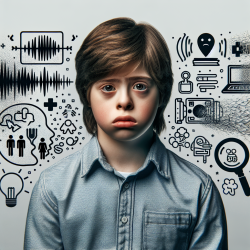The interaction between bilingualism and stuttering has long been a topic of interest within the field of speech-language pathology. Recent findings from the Early Childhood Longitudinal Study (ECLS-K:2011) offer new insights that can help practitioners refine their diagnostic processes and improve outcomes for children.
Understanding the Study
The research article titled "Bilingualism as a risk factor for false reports of stuttering in the Early Childhood Longitudinal Study (ECLS-K:2011)" provides a comprehensive analysis of data from monolingual and bilingual children in Kindergarten through fifth grade. The study highlights several key findings:
- The prevalence of reported stuttering is higher among bilingual children compared to monolingual children.
- The male/female ratio of reported stuttering in bilingual children is significantly lower than in monolingual children.
- There is an implausibly high number of late-onset stuttering cases reported among bilingual children.
Implications for Practitioners
The study suggests that bilingual children are at an increased risk of being falsely reported as stuttering. This can be attributed to several factors, including:
- A lack of awareness of the difference between stuttering and normal disfluencies.
- The informal usage of the term "stuttering" by teachers and parents to describe typical disfluencies.
To mitigate these risks, practitioners should consider the following strategies:
1. Educate Parents and Teachers
Providing clear guidelines and educational materials on the differences between stuttering and typical disfluencies can help reduce the number of false reports. Emphasize the importance of formal assessments conducted by qualified speech-language pathologists.
2. Use Comprehensive Diagnostic Tools
Incorporate a variety of diagnostic tools that go beyond simple disfluency counts. Consider using instruments like the Stuttering Severity Instrument (SSI-IV) and the Overall Assessment of the Speaker's Experience of Stuttering (OASES) to get a more holistic view of the child's speech patterns.
3. Encourage Further Research
Given the inconsistencies highlighted in the ECLS-K:2011 data, further research is essential. Encourage academic and clinical researchers to explore more robust methods for assessing stuttering in bilingual populations.
Conclusion
The findings from the ECLS-K:2011 study underscore the need for caution when diagnosing stuttering in bilingual children. By implementing these strategies, practitioners can improve diagnostic accuracy and ensure better outcomes for their young clients.To read the original research paper, please follow this link:
Bilingualism as a risk factor for false reports of stuttering in the Early Childhood Longitudinal Study (ECLS-K:2011).










